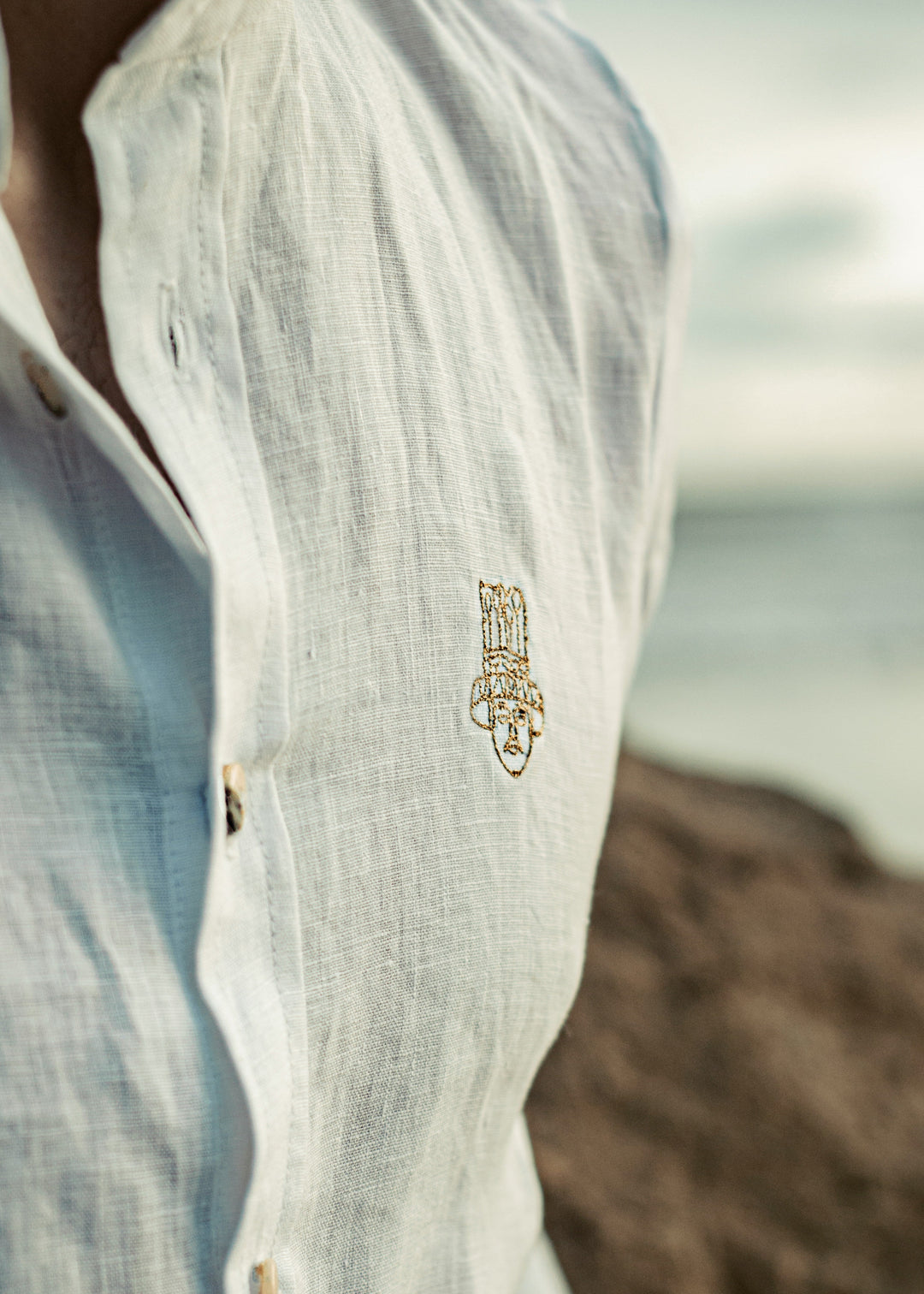History of Hand Embroidery: A Timeless Art Form
History of Hand Embroidery: A Timeless Art Form
Introduction
Hand embroidery is an ancient and beautiful craft. It involves creating decorative patterns on fabric using a needle and thread. Hand embroidery is a skillful art practiced by human artisans who invest their creativity, patience, and effort into each piece. Over the centuries, hand embroidery and handwork have evolved, blending tradition with modern techniques. Despite the rise of machines, hand embroidery remains cherished for its personal touch and craftsmanship.

Ancient Beginnings (3000 BC - 1000 AD)
Hand embroidery traces its roots to ancient times when early civilizations began to decorate textiles with intricate patterns. Some of the earliest evidence of hand embroidery comes from ancient Egypt, where rich and influential people wore embroidered garments as a sign of power and status. Egyptian embroidery often featured motifs of lotus flowers, scarabs, and symbols of gods, crafted with natural threads and enhanced with beads and shells.
In ancient China, silk embroidery became highly developed around 2000 years ago. Chinese human artisans produced elegant patterns of dragons, flowers, birds, and mythical creatures on silk fabrics. Techniques like Suzhou embroidery showcased fine, smooth stitches, while ethnic minorities developed distinct styles with vibrant colors and bold patterns.
In ancient India, hand embroidery was influenced by religious and cultural traditions. Indian artisans created colorful patterns with threads made from natural fibers. Techniques such as Zardozi (metallic embroidery), Kantha (simple running stitch patterns), and Chikankari (white-on-white embroidery) became iconic. Embroidery was not just decoration but a way of storytelling, reflecting mythology and social customs.

The Middle Ages (1000 AD - 1500 AD)
During the Middle Ages, Europe saw the rise of religious and courtly hand embroidery. Monasteries became centers of craftsmanship, where monks and nuns produced richly embroidered vestments, altar cloths, and religious banners. Goldwork, using real gold threads, became a prominent technique, creating dazzling patterns that symbolized devotion and wealth.
Secular embroidery also flourished. Noble families commissioned human artisans to craft elaborate patterns on tapestries, bed linens, and ceremonial garments. In the Islamic world, embroidery was highly valued for both clothing and home textiles. Human artisans created geometric and floral patterns that reflected Islamic art principles, using fine silk and metallic threads.
Native American tribes developed unique embroidery styles using natural dyes and materials. Bead embroidery was a common technique, with patterns reflecting tribal stories, spiritual beliefs, and social status.

Renaissance and Baroque Periods (1500 AD - 1700 AD)
During the Renaissance, human artisans expanded embroidery techniques, incorporating elements from painting and sculpture. Floral motifs, realistic human figures, and mythological scenes became common. Embroidery became a fashion statement among European aristocrats, who wore elaborately embroidered garments to display wealth and sophistication.
The Baroque era took this artistry even further. Heavy use of gold and silver threads, pearls, and gemstones made embroidery luxurious. The intricate lacework also became popular, merging with embroidery techniques to create delicate and ornamental designs.
The Industrial Revolution (18th - 19th Century)
With the Industrial Revolution came mechanization, changing the world of embroidery. Machine embroidery became more common as factories began producing textiles faster and more affordably. However, hand embroidery remained important, especially in rural areas where human artisans preserved traditional techniques. Folk embroidery styles, such as Eastern European cross-stitch and Scandinavian counted thread work, remained popular among common people.
In the 19th century, hand embroidery began to be taught formally, with schools offering lessons on stitching techniques. Victorian embroidery focused on floral and botanical patterns, often incorporating wool and silk threads. Samplers, made by young girls as practice, became a common way to learn embroidery skills.
20th Century Revival
The 20th century saw a revival of interest in hand embroidery. As fashion evolved, designers began to appreciate handcrafted details. In the 1920s, the Art Deco movement inspired geometric and linear embroidery patterns. The Arts and Crafts movement promoted the value of handmade items, emphasizing the beauty of human artisanship.
During the 1960s and 70s, embroidery became a form of self-expression. Hippie fashion included hand-embroidered jeans, jackets, and bags, reflecting individuality and rebellion against mass production.

Modern Hand Embroidery (21st Century)
Today, hand embroidery blends tradition with innovation. Human artisans use both classic and modern techniques to create art pieces, clothing embellishments, and home decor. Social media platforms like Instagram and Pinterest have sparked a renewed interest, as hobbyists and professionals share their hand-embroidered creations.
Custom hand embroidery is popular for personalized gifts and fashion. Some artisans have turned their skills into businesses, making unique, handmade products that attract customers looking for authenticity and craftsmanship.
Year-Wise Progress of Hand Embroidery
-
3000 BC: Earliest evidence in Egypt with natural threads.
-
1000 BC: Chinese silk embroidery emerges.
-
500 AD: Indian embroidery styles evolve.
-
1000 - 1500 AD: European religious embroidery flourishes.
-
1500 - 1700 AD: Renaissance and Baroque luxury embroidery.
-
1700 - 1800 AD: Industrial Revolution introduces machine embroidery.
-
1900 - 1950 AD: Revival of hand embroidery in arts and crafts.
-
1960 - 1970 AD: Embroidery as a fashion statement.
-
2000 - Present: Social media and contemporary artisan revival.
Why Hand Embroidery Matters Today
Hand embroidery matters because it keeps human creativity alive. It is more than just stitching; it is an art that tells stories and keeps traditions alive. Even in today’s fast-paced world, handmade embroidered items remind us of the importance of skill, patience, and heritage. Many people support human artisans because they value the authenticity and effort put into each piece.
Hand embroidery has traveled through time, adapting and evolving while preserving its essence. Human artisans have kept this craft alive, making it a vibrant part of our cultural heritage. From ancient civilizations to modern fashion, hand embroidery remains a symbol of dedication, creativity, and timeless beauty.




